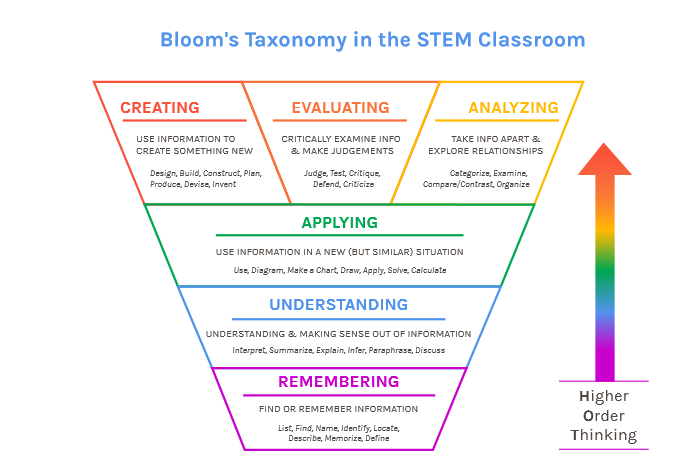The next generation classroom environment needs to create this type of inquiry opportunity for the students to engage in the practices of science and engineering. Of key importance is the idea that their solution will be different from the solution created by the team next to them—and that it’s fine that they’re different. It’s all about giving students the individual opportunity to demonstrate their understanding of the practices and content.

But before they get here, they have to have an adequate foundation of background knowledge to build upon. This comes from nonfiction reading and Socratic dialogue.
KnowAtom approaches nonfiction reading from the perspective of purpose. It’s organized in sections according to lessons—a group of concepts that create context for students to be scientists and engineers, not a "30-minute time-limit." These resources are written as grade-level appropriate nonfiction narratives in a way that engages and connects students’ worlds to the elements of science, bringing the subject out of isolation and (in a lot of instances) creating connections to Common Core ELA and math.
Science Words To Know: A vocabulary lesson 
The other piece of this puzzle that’s important is the consistent use and definition of content-specific vocabulary, which is mirrored in lessons and discussions.
Once students as a class have established common background through reading, whether it is on their own or in class together, it comes time to activate learning—something that can only be achieved via person-to-person interaction. This is an important concept. In this scenario, the teacher serves as the moderator in a discussion and students consider and respond to each other’s contributions. Nonfiction reading supports this back and forth, allowing students to bring something to the dialogue—pulling in vocabulary words and referencing concepts they’ve noticed in their reading, intentionally causing them to evaluate and analyze each other’s informed thoughts.
Socratic Dialogue
Let’s take a quiz: Which of the questions shown here requires the highest order of thinking? You might be surprised at the answer. It’s the last one—the question that asks students to transform and apply knowledge in context.
- Rocks are transformed in the rock_(cycle)_.
- Why did the car skid to a stop?
- How does snow reduce friction?
- How does fire mimic living characteristics?
- Should mushrooms have their own kingdom?
- How could scientists use sound to catch fish?
Number six in particular asks students to create a way to catch fish (hypothetically). In this way, Socratic Dialogue connects knowledge with practices. It asks students to use their scientific knowledge about how sound waves travel through water to think like an engineer, coming up with a technology that catches fish. Engineers solve problems by developing and testing a prototype.
Rethinking Bloom’s Taxonomy
Within this new thinking about instruction and engagement, STEM under the NGSS gives us the opportunity to re-evaluate how we think about Bloom’s Taxonomy in the classroom.

Today, with effective STEM instruction, we have the opportunity to leverage the higher order thinking skills that build upon one another via Bloom’s model... simultaneously. The class environment is now a place that’s focused on creating, evaluating and analyzing rather than simply remembering, understanding or applying. To fulfill the NGSS practices, students must create a procedure, test it, evaluate the results of their tests, analyze data gathered and relate it to data from their peers, which gives them the opportunity to exercise higher order thinking continuously, at every stop along the way. Socratic dialogue primes the pump of the inquiry learning environment.




